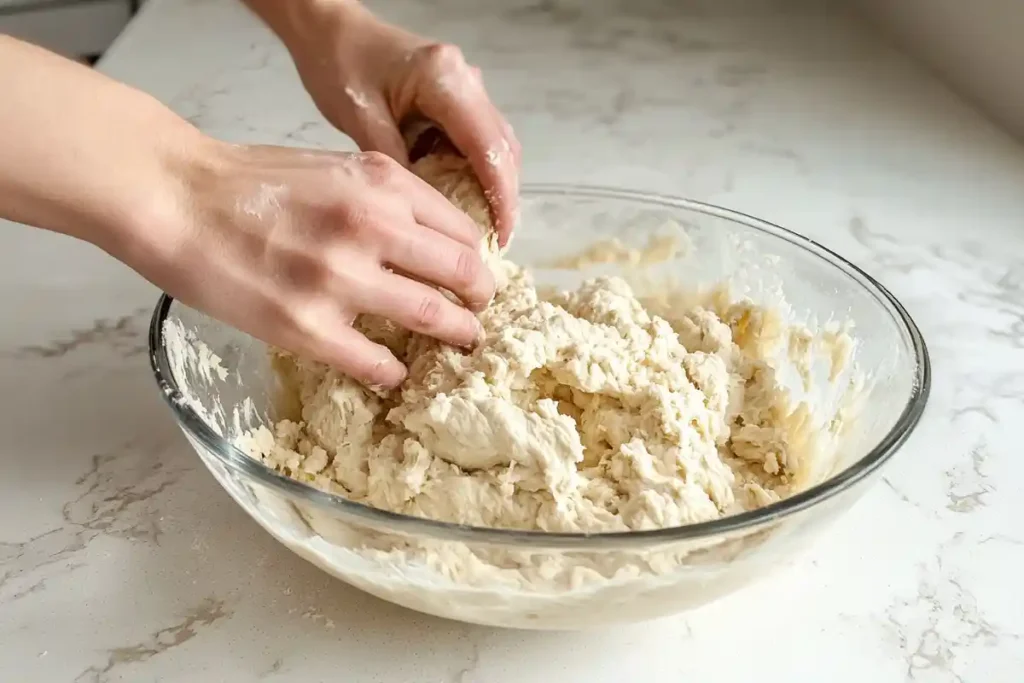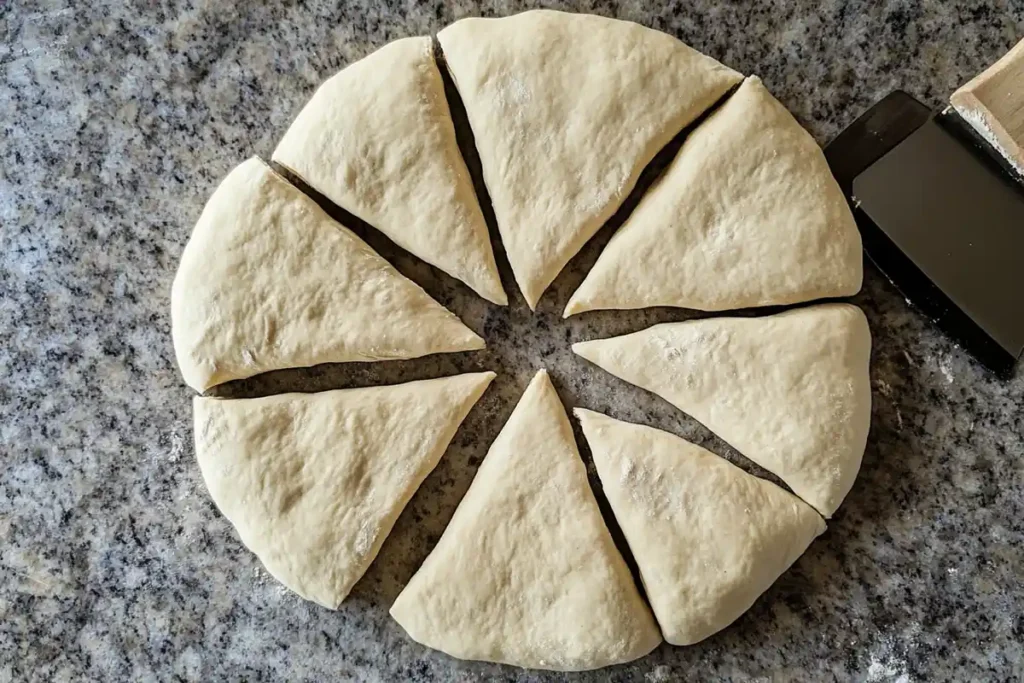Introduction To Asiago Sourdough Bagels
Imagine the aroma of fresh, golden-brown bagels wafting through your kitchen, enriched with Asiago cheese’s nutty, slightly tangy flavor. If this sounds like the perfect breakfast or snack, you’re in for a treat! This article dives deep into the process of creating the most delicious Asiago Sourdough Bagels, which feature a delightful medley of soft, chewy interiors and crisp exteriors—loaded with cheese both inside and on top.
What makes these bagels so special? The sourdough starter adds a depth of flavor that you simply can’t achieve with regular bagel recipes. Plus, Asiago cheese elevates these bagels to gourmet status, making them an irresistible choice for anyone who loves savory baked goods. Whether you’re a seasoned baker or a complete newbie, this guide will walk you through everything you need to create these perfect bagels in the comfort of your home. And the best part? These bagels are versatile, inspiring you to get creative with various meals.
So, grab your apron, get your sourdough starter ready, and let’s bake something truly unforgettable! Oh, and don’t forget to share your results—you’ll want to show these beauties off.
Table of Contents
Health Benefits of Asiago Sourdough Bagels
Regarding baked goods, Asiago Sourdough Bagels are not just a delicious indulgence—they’re surprisingly packed with health benefits too! Thanks to the natural fermentation process of the sourdough starter, these bagels offer more than just flavor. They bring a host of nutritional perks, making them a guilt-free treat you’ll feel good about eating. Let’s examine why these bagels stand out as a healthier option than conventional bagels, reassuring you of their health-conscious nature.
The Role of Natural Fermentation


Sourdough bagels are made using a sourdough starter, a mix of flour and water fermented by naturally occurring wild yeast and bacteria. This fermentation process doesn’t just enhance the flavor—it also transforms the nutritional profile of the bagels, making them easier to digest and healthier overall. It perfectly exemplifies how traditional baking methods align with modern health trends.
Gut Health Support
The fermentation process in sourdough creates probiotics—beneficial bacteria that promote a healthy gut. While baking kills off these live probiotics, the prebiotics created during fermentation remain intact. Prebiotics serve as food for the good bacteria in your gut, helping to maintain a balanced microbiome and improving digestion.
Degraded Gluten for Easier Digestion
If you’ve ever felt bloated or sluggish after eating regular bagels, you’ll love the difference that sourdough fermentation makes. The natural bacteria in the starter partially break down the gluten in the dough, making it easier for your body to process. While not suitable for those with celiac disease, these bagels can be a better option for individuals with mild gluten sensitivities.
Rich in Bioavailable Nutrients
Fermentation enhances the bioavailability of key nutrients in the flour, such as magnesium, zinc, and B vitamins. It means your body can absorb and utilize these nutrients more efficiently. Additionally, sourdough bagels have lower levels of phytic acid—a compound found in grains that can inhibit nutrient absorption.
Low Glycemic Index for Sustained Energy
Another standout benefit of Asiago Sourdough Bagels is their lower glycemic index than traditional bagels. The fermentation process slows down the breakdown of carbohydrates, resulting in a steady release of glucose into the bloodstream. It means these bagels won’t spike your blood sugar levels, keeping you full and energized for longer.
A Source of Protein and Calcium
Thanks to the addition of Asiago cheese, these bagels pack an extra punch of protein and calcium. Protein is vital for muscle repair and growth, while calcium is essential for bone health. Plus, the rich, cheesy flavor adds to the overall indulgence without compromising the nutritional value.
Equipment Needed For Asiago Sourdough Bagels
Before diving into the recipe for Asiago Sourdough Bagels, ensuring you have the right tools at your disposal is essential. Having the proper equipment makes the baking process smoother and helps you achieve professional-level results. Don’t worry—most of the items listed here are kitchen staples, and if you’re missing a tool or two, there are usually alternatives that can work just as well.
Dough Mixer or Sturdy Mixing Bowl: If you don’t have a stand mixer, a sturdy mixing bowl and a strong arm will work fine for hand-kneading. Kneading by hand can be quite therapeutic, so feel free to get your hands in there!
Kitchen Scale: Precision is key when it comes to baking. A digital kitchen scale ensures you measure your ingredients accurately, which is especially important for sourdough recipes where ratios play a significant role. Measuring by weight (rather than cups) helps maintain consistency, which means your bagels will turn out perfect every time.
Dough Scraper: A dough scraper, also known as a bench scraper, is a versatile tool that makes handling sticky sourdough dough much easier. It’s especially useful for cutting and shaping the dough into portions for individual bagels. Plus, it’s great for cleaning up floury work surfaces when you’re done.
Proofing Basket or Bowl: For the fermentation stage, a proofing basket (banneton) or a simple bowl lined with a floured kitchen towel will do the trick. These containers help the dough maintain its shape while it rises, ensuring your bagels are uniform and sturdy when baked.
No Fancy Equipment? No Problem!
If you don’t have all of these tools, don’t let that stop you from making these bagels. Many items can be substituted with basic kitchen utensils. For example, you can use a regular pot for boiling, a fork instead of a slotted spoon, or even a large serving tray instead of a baking sheet. The goal is to work with what you have and enjoy the process!
Asiago Sourdough Bagels Recipe Details
Now that you have all your tools and equipment ready, it’s time to dive into the recipe for Asiago Sourdough Bagels. This step-by-step guide will walk you through the process, from mixing the dough to achieving that perfect golden-brown finish. With a little patience and care, you’ll create soft and chewy bagels on the inside, crisp on the outside, and bursting with the nutty, savory flavor of Asiago cheese. Let’s get started!
Ingredients For Asiago Sourdough Bagels
For this recipe, the ingredients are divided into two sections: one for the bagel dough and one for the toppings. Using fresh, high-quality ingredients will ensure the best results.
For the Bagel Dough:
- 500g bread flour (or all-purpose flour, if needed)
- 150g active sourdough starter (fed and bubbly)
- 250ml warm water (room temperature or slightly warm)
- 10g salt (about 2 teaspoons)
- 15g honey or sugar (optional, for a slight touch of sweetness)
- 100g grated Asiago cheese (for mixing into the dough)
For the Toppings:
- 50g grated Asiago cheese (for sprinkling on top)
- 1 tablespoon sesame seeds (optional, for extra crunch)
- 1 tablespoon poppy seeds (optional, for a visual and flavor boost)
Step-by-Step Instructions
Mixing the Dough


Begin by combining the bread flour, sourdough starter, water, salt, and honey (if using) in a large mixing bowl or the bowl of your stand mixer. Mix on low speed until the ingredients come together into a rough dough. If kneading by hand, use your hands to bring everything together.

Once the dough has formed, add 100g of grated Asiago cheese. Continue kneading for about 8-10 minutes (or mix on medium speed for 5-7 minutes if using a stand mixer) until the dough is smooth, elastic, and slightly tacky. The cheese should be evenly incorporated into the dough.
Bulk Fermentation
Transfer the dough to a lightly oiled bowl, cover it with a damp kitchen towel, and let it ferment at room temperature for 4-6 hours, or until it doubles in size. For a deeper flavor, you can refrigerate the dough overnight after the initial rise. Just bring it back to room temperature before proceeding to the next step.
Shaping the Bagels

Once the dough has risen, turn it out onto a lightly floured surface. Use your dough scraper to divide the dough into equal portions (approximately 8-10 pieces, depending on your preferred bagel size). Roll each piece into a smooth ball, then use your finger or the back of a wooden spoon to poke a hole through the center. Stretch the hole gently until it’s about 1-2 inches wide, as it will shrink during the boiling and baking process.
Boiling the Bagels

Preheat your oven to 220°C (425°F) and boil a large pot of water. Add 1 tablespoon of baking soda to the boiling water (optional but helps create a shiny crust). Carefully drop 2-3 bagels at a time into the boiling water. Boil for 1 minute on each side, then use a slotted spoon to transfer them to a parchment-lined baking sheet.
Topping the Bagels


While the bagels are still wet from boiling, sprinkle the remaining grated Asiago cheese generously over the tops. Add sesame, poppy, or even more cheese if desired for extra flavor and texture.
Baking the Bagels
Place the baking sheet in the oven and bake for 20-25 minutes until the golden brown bagels and the cheese on top have melted into a bubbly, crispy crust. For an even bake, rotate the tray halfway through the baking time.
Cooling the Bagels

Once baked, transfer the bagels to a cooling rack. Allow them to cool for at least 10 minutes before slicing and serving. It ensures the interior sets properly, giving you that signature chewy texture.
Pro Tips for Success
- Hydration Matters: If your dough feels too dry or too sticky, adjust by adding a tablespoon of water or flour at a time until it reaches the right consistency.
- Room Temperature Starter: Ensure your sourdough starter is active and bubbly before using it—this is key for a proper rise.
- Don’t Skip the Boil: Boiling the bagels gives them their iconic chewy crust, so don’t be tempted to skip this step!
Serving Suggestions
Now that your Asiago Sourdough Bagels are baked to golden perfection, it’s time to think about how best to enjoy them. These incredibly versatile bagels pair beautifully with various spreads, toppings, and sides. Whether you’re planning a cozy breakfast, a quick lunch, or an indulgent snack, these ideas will ensure your bagels are as satisfying as they are delicious.
Classic Spread Ideas
The simplest way to enjoy Asiago Sourdough Bagels is with a generous slather of a classic spread. Here are some tried-and-true options to enhance their cheesy, tangy flavor:
- Cream Cheese: The cream cheese’s creamy texture and subtle tang perfectly complement the nutty flavor of Asiago cheese. Try flavored cream cheeses like chive, herb, or jalapeño for a fun twist.
- Butter: A pat of butter melting into a warm, toasted bagel is pure comfort food. Opt for salted butter for extra richness.
- Garlic Butter: For a savory upgrade, mix butter with minced garlic, parsley, and a pinch of salt for a homemade garlic butter spread.
- Hummus: If you’re looking for a dairy-free option, hummus adds a smooth and savory touch that pairs well with the bagel’s cheesy profile.
Elevated Sandwich Creations
Transform your Asiago Sourdough Bagels into a hearty sandwich with these creative ideas:
- Breakfast Bagel Sandwich: Layer your bagel with scrambled eggs, crispy bacon, and a slice of avocado for a filling morning meal. Add a drizzle of hot sauce if you like a kick of spice.
- Smoked Salmon and Cream Cheese: Spread cream cheese on the bagel, then top with smoked salmon, capers, thinly sliced red onions, and a squeeze of fresh lemon. This classic combination is as elegant as it is tasty.
- Turkey and Pesto: Fill your bagel with roasted turkey slices, a basil pesto dollop, and fresh spinach leaves. The fresh and savory flavors pair wonderfully with the Asiago cheese.
- Grilled Veggie Delight: Stack roasted zucchini, bell peppers, eggplant, and a smear of goat cheese between your bagel halves for a delicious vegetarian option.
Toasting Tips for Extra Flavor
While these bagels are delicious, toasting them enhances their crispy exterior and warm, chewy interior. Simply slice the bagel in half and toast it in a toaster or broiler until lightly golden. For an extra-special touch, sprinkle additional grated Asiago cheese on the cut side before toasting. The cheese will melt and create a delightful crust.
Pairing Ideas for Asiago Sourdough Bagels
Pair your Asiago Sourdough Bagels with sides and beverages to create a complete meal or snack:
- Soup Pairings: Serve the bagels alongside a creamy tomato soup, broccoli cheddar soup, or a hearty minestrone for a comforting combination.
- Salads: Enjoy the bagels with a fresh garden salad or a Caesar salad for a light and balanced meal.
- Beverages: For breakfast, pair your bagels with a steaming cup of coffee or tea. For lunch or dinner, a sparkling water or a glass of white wine like Chardonnay works beautifully.
Sweet Meets Savory
Surprisingly, Asiago Sourdough Bagels also work well with sweet toppings, creating a delightful contrast:
- Honey or Fig Jam: Spread a thin layer of honey or fig jam over the bagel for an utterly irresistible sweet-savoury combination.
- Apple Slices and Honey: Add thin slices of crisp apple and drizzle honey on top for a fresh and fruity twist.
- Maple Cream Cheese: Mix cream cheese with maple syrup for a sweet, creamy spread that complements the nutty Asiago.
FAQs About Asiago Sourdough Bagels
Are sourdough bagels healthier than regular bagels?
Yes, sourdough bagels are healthier due to their natural fermentation process. They’re easier to digest, have a lower glycemic index, and offer more bioavailable nutrients like magnesium and zinc. Sourdough also contains prebiotics that support gut health and provide sustained energy.
What is Asiago sourdough?
Asiago sourdough combines the tangy flavor of sourdough with the rich, nutty taste of Asiago cheese. The cheese is mixed into the dough and sprinkled on top for bagels, creating a flavorful blend of sharp, creamy, and tangy goodness.
What goes best on an Asiago bagel?
Asiago bagels pair perfectly with cream cheese, butter, or garlic-herb spreads. Try smoked salmon, avocado, or turkey with pesto for savoury options. Use honey, fig jam, or maple cream cheese for a sweet contrast. They also make great sandwich bases!
What do you eat with a sourdough bagel?
Sourdough bagels are great with spreads like cream cheese, butter, or jam. They pair well with soups, salads, and breakfast toppings like eggs or bacon. Use them as sandwich bases or enjoy with coffee, tea, or wine for a balanced meal.
If you’re enjoying the idea of baking delicious treats like these Asiago Sourdough Bagels, why not explore more sourdough recipes on my site? Try the hearty Pumpkin Sourdough Bread, fluffy Sourdough Dinner Rolls, creative Sourdough Discard Tortillas, or the rich Sourdough Cinnamon Rolls. Each recipe is designed to help you bake confidently and create something truly special!

